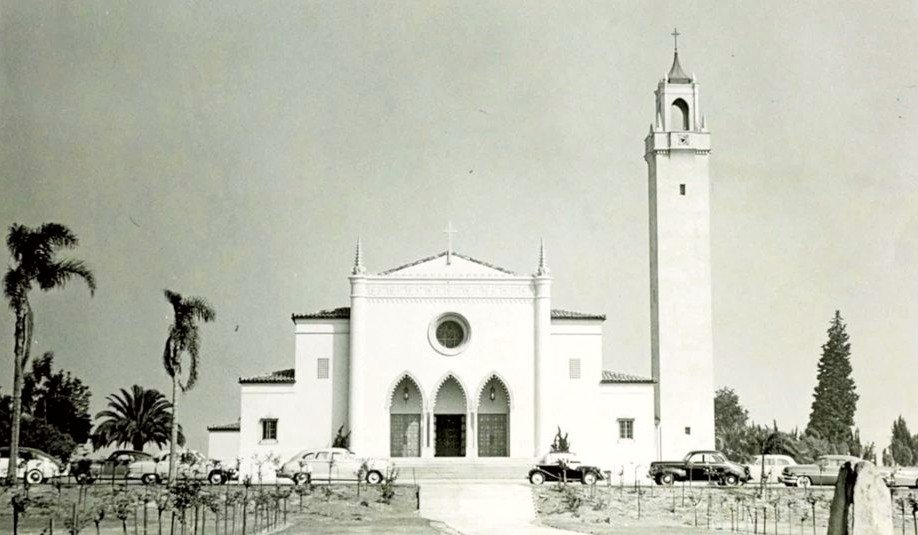
Patriot, Inspector, Innovator
The Story of Mohammed Imam Hussain
PART 2
Family photographs, documents and writings courtesy of the family of Md. Imam Hussain
The idea for TRAILBLAZERS was created by Haikal Mansor
In October 2016, at the age of 90, Mohammed Imam Hussain wrote page after page detailing significant moments in his life. Imam Hussain’s story spans decades as well as continents. For TRAILBLAZERS, his story is divided into two parts. Each representing a significant period in his long life. Here in Part 2, we continue to use Imam Hussain’s actual handwriting from these pages to guide us through some of these moments in his extraordinary life. Read Part 1 of his story HERE.
As a young man, Imam Hussain had served for the British in “V” Force against the Japanese during WWII and had spent several years as a Sub-Inspector in the Burma Police after the war. Increased violence against the Muslim community in Arakan and security concerns forced him to leave his homeland in 1948. He fled to Karachi, Pakistan where he then attended university and studied mathematics, chemistry and english. In 1955, at the age of 29, Imam Hussain traveled by boat from Karachi to the United Kingdom, and on August 30th, 1955, he boarded the passenger ship SS Liberte in Southampton, England. The ship took him to New York City. He arrived in New York City on September 2nd. His destination: Fort Wayne, Indiana. He was one of the first members of the Rohingya community to resettle in the United States. It is said he arrived in the United States with $2 USD in his pocket.
Mohammed Imam Hussain’s arrival in the United States was the beginning of a life filled with academic and professional achievements. In 1955 he began his pursuit of a Bachelor of Science degree at the Indiana Technical College in Ft. Wayne, Indiana. He was a member of the Electrical Club which was a section of the American Institute of Electrical Engineers. In 1957 he moved to the Bay Area of California where he completed his Bachelor of Science Degree in Electrical Engineering at Heald Engineering College in San Francisco. Not long after graduating, he started his first job as a Junior Engineer.
In 1960, he applied for permanent residency.

Imam Hussain (top row - middle) with other electrical engineering students in the 1956 Indiana Technical Collage yearbook titled, the KEKIONGAN.

A photograph of Imam Hussain (seated on far left) with other members of the Electrical Club. This photograph appears in the 1957 Indiana Technical Collage yearbook.
In 1958, Imam Hussain received his Bachelor of Science Degree from Heald Engineering College in San Francisco.
In 1961 Imam Hussain traveled back home to Burma to get married to Jomilah Khatoon. Imam Hussain and Jomilah had known each other since they were children. Both of their families were Rohingya from the same area of Maungdaw and knew each other. She was a strong woman and had endured personal loss during the years of WWII. The two were married on May 19, 1961. Several months later, she travelled to Hawaii by ship and then to California where she joined Imam Hussain. They settled near Los Angeles and started a family. Over the next few years, they had three daughters.
Imam Hussain continued his work and while working, he also attended West Coast University. In 1966, he received his first Masters Degree in Electrical Engineering. That same year, he and Jomilah naturalized as US citizens.

Photographs of Jomilah Khatoon before her marriage with Mohammed Imam Hussain. Also displayed is a page of their marriage certificate issued in Burma and a photograph of them taken in a photo studio in Rangoon after their wedding in 1961.

Imam Hussain’s graduation diploma and text from his resume describing his Master of Science degree in Systems Engineering from West Coast University in 1966.
Imam Hussain attending his graduation ceremony from West Coast University in June 1966.
On November 26, 1968, Mohammed Imam Hussain and Jean-Louis Riehl M.D. were granted Patent# 3,416,546 from the US Patent Office. Jean-Louis Riehl was a prominent neurosurgeon from the Division of Neurology at the UCLA Center for Health Sciences. He was also a consultant for the US Department of Defense. Their patent was for an innovation that dealt with electronic circuitry used in providing real-time analysis of electroencephalographic waveforms in brian activity. The EEG, or as Imam Hussain called it, “The Brain Waves Analyzer.”
The EEG continues to be used around the world today for testing and evaluating the electrical activity of the brain and the mental capacity of people under various mental and physical conditions.


On August 9, 1977, Mohammed Imam Hussain was granted his 2nd patent from the US Patent Office. Patent# 4,041,486 was for an innovation called the ‘Pulse Stream Identification Circuit’, which related to Distance Measurement Equipment and the radio navigation systems in aircraft. Aircraft use various forms of ‘pulse streams’ to identify themselves. The invention analyzes the characteristics of various steams of ‘pulses’ providing an identification system for these pulses.
As an important source of data to measure distance, identification and radar tracking, the invention continues to be used by air traffic controllers today.


Original photographs of Rohingya refugees in Bangladesh during Naga Min Operation in 1978. (Photographer Unknown) Several of the photos appear in the book written by Imam Hussain, Genocide In Burma Against the Muslims of Arakan. The book was published by the Rohingya Patriotic Front (RPF)
By the 1970s, Mohammed Imam Hussain’s homeland of Burma was under the control of a brutal military regime. General Ne Win and the military’s grip on Burma had become increasingly oppressive. Ne Win’s policies were highly racialized and xenophobic against Muslim communities, especially the Rohingya in Arakan. With a new constitution in 1974, Arakan was now officially Rakhine State. On February 6, 1978 immigration officials swept into Akyab (today the city of Sittwe) and launched the Naga Min Operation or Operation Dragon King. In Arakan, the operation was launched as an ‘immigration operation’ attempting to cut down on illegal ‘Bengali’ immigrants. Instead it targeted Rohingya with violence, arrests and killings. Naga Min Operation resulted in the largest mass displacement of Rohingya from Burma into Bangladesh at that time. It is estimated over 200,000 Rohingya fled to Bangladesh during the operation.
Because of his English language skills, leaders of the Rohingya liberation group, the Rohingya Patriotic Front (RPF) asked Imam Hussain to travel to Bangladesh and help write an account of the atrocities to share with the international community. With a deep sense of responsibility to his community, he agreed.
Upon arriving in Bangladesh, he spent several weeks working. On April 11, 1978, the book, Genocide In Burma Against the Muslims of Arakan was published and released by the Rohingya Patriotic Front. Through the testimonies of survivors and information gathered by RFP and others, the book provides an almost daily account of the atrocities committed by the Burmese military during the months of February and March 1978. The book also includes ‘Causes of Genocide’ against the Rohingya community as well as photographs. While his name does not appear in the book, elders acknowledge Imam Hussain was the author.

Pages from inside the book written by Imam Hussain, Genocide In Burma Against the Muslims of Arakan.

Imam Hussain continued to stay informed about the struggles of the Rohingya community in Burma and Bangladesh. From afar, he would watch as more atrocities were committed against the Rohingya in the 1980s, 1990s and 2000s. His family says he had enormous empathy for the people of his community and what they endured and that being in Bangladesh and writing the book in 1978 during Naga Min was an important moment in his life.
In 1980, at the age of 54 and after several years of studying part-time, he received his second Masters Degree from Loyola Marymount University.
Throughout his professional career, he worked as a staff engineer for companies like Thiokol Corporation, McDonnell Douglas and TRW (Thompson, Ramo, Wooldridge Inc.). He contributed to several projects and contracts for the US Department of Defense. When he retired in 1989, he was a Senior Staff Engineer at Hughes Aircraft Company.

A photograph and graduation diploma of 54-yr-old Imam Hussain in 1980 after receiving his 2nd Masters degree in Electrical Engineering at Loyola Marymount University in Los Angeles.


Imam Hussain with Jomilah and grandson.
While Electrical Engineering was his career, his life (even after retirement) was driven by a passion for family, learning, education, innovation and community. He was involved in the local mosque, was a prolific reader at home and at the public library and he enjoyed cooking and living a healthy life. Sadly, in 2005, Jomilah K. Hussain passed away. They had been married for over 44 years.
In 2006, Imam Hussain returned to Myanmar one last time. The trip fulfilled his wish to return to his homeland. During his trip, he spent time visiting family and friends in Yangon. The military government had imposed heavy travel restrictions on anyone traveling to Arakan (Rakhine State). Most Rohingya living in Rakhine State were not permitted to travel between villages without approval. Unfortunately, Imam Hussain could not visit his hometown of Maungdaw on the trip.
Mohammed Imam Hussain passed away on December 24, 2016 at the age of 90.
Read Part 1 of his story HERE.
The project Ek Khaale extends its deepest gratitude to the family of Mohammed Imam Hussain.



































